Diablo Review
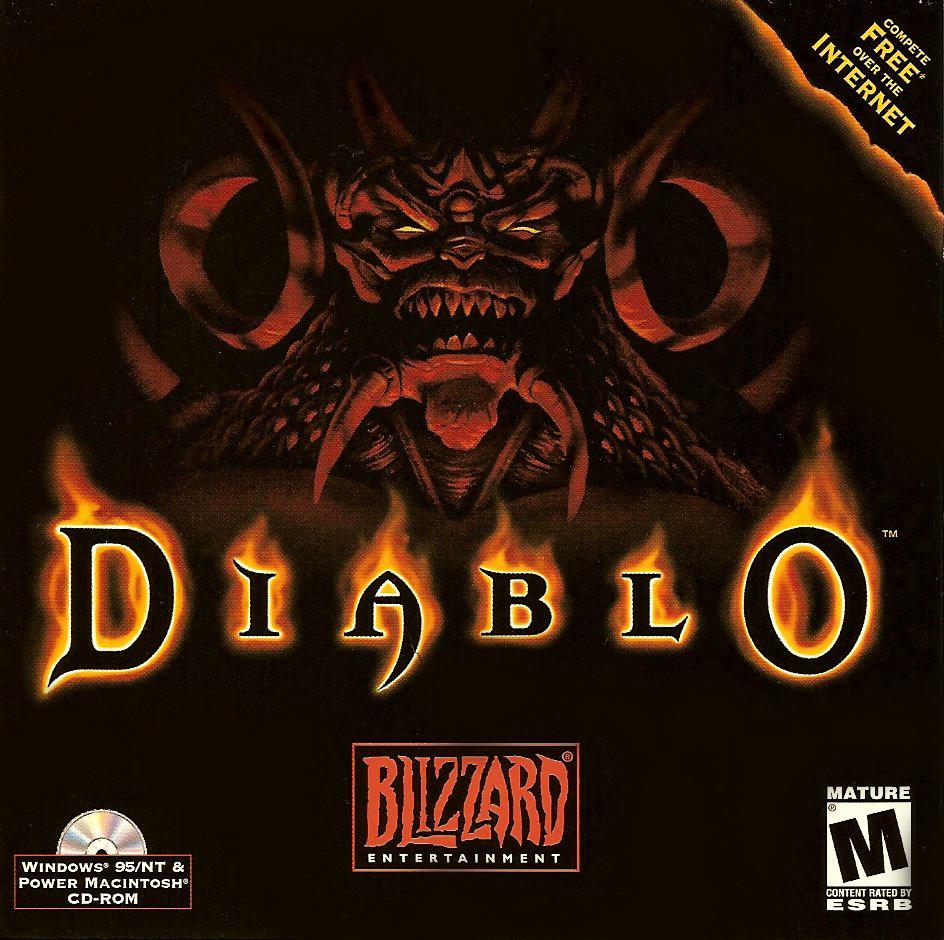
Back to basics dungeon crawling set in a gothic dark fantasy world.
Story
The land Khanduras has seen years of hardships in forms of lies, treachery and corruption. But the real trouble came when the never-ending battle between heaven and hell seeped into the realm of mortals.
Most people had already fled the village Tristram before unearthly creatures started to ravage it. It became apparent that something vile was brewing in the cellars of the local monastery. Only a few brave souls are left to avenge all the deaths and protect the innocent village.
The Game
Diablo is a dungeon crawling game set in a dark gothic fantasy setting. The game is played from an isometric view and it is rendered in 2D graphics. You can play as three different character classes; warrior, sorcerer or rogue.
The goal of the game is simply to defeat the final boss – Diablo himself – lurking somewhere in a twisted, hellish chamber below the village of Tristram. To get there, you must battle your way through hordes of monsters, explore many dark dungeons and most importantly build up your character with magic items, spells and combat experience.
Controls
The controls in Diablo are pretty basic, but they are not very streamlined. The left mouse button is used to attack monsters – one click means one attack, which gets very tiring after a few hours of playing. The game features a quick slot bar for healing and mana potions, so you need to have your fingers ready on the number keys in order to quickly quaff a potion when the need arises.
Perhaps the biggest pain in the whole game is when you’re supposed to look for items that lie on the ground. Sometimes it’s impossible to see them because they lie camouflaged against all the rubble and corpses that may lie there. Pointing at an item does highlight it and show what it is in an info box, so you’ll often find yourself frantically scan the floor with the mouse cursor.
Spells and skills are used with the right mouse button, and the character info page and inventory screens are summoned up with hot keys on the keyboard.
Your character isn’t very mobile so the best defensive tactic is to lure monsters into a choke point such as a doorway and take them out there one by one. It’s very easy to exploit this tactic and if your character isn’t up to par, it is basically the only way to survive the oncoming droves of monsters.
Every time your character gets hit, there is a brief moment where he is stunned, unable to do anything other than just stand there for that fraction of a second. If there are multiple monsters attacking you, you may find yourself stunned indefinitely until you die. This can be prevented to some extent using items that reduce your “recovery time”, but the mechanic does feels quite unbalanced and often becomes overly punishing.
Content
Depending on what class you choose to play as your play experience will be slightly different. The warrior is best at fighting monsters in close quarters combat while the rogue excels in ranged combat using bows, and the sorcerer relies on heavy spell casting. These three general fighting styles are what this game offers, and I find that they aren’t exactly balanced in terms of power, survivability and damage potential.
When you kill monsters you gain experience points, which in turn will allow your character to rise in levels. The max character level in this game is 50 and to reach that level you’d have to play for weeks.
As your character rises in levels, it will eventually discover and learn new spells. As you reach the higher levels you will have pretty much the same spell repository regardless of what class you chose to play as. As such, the game isn’t really well-balanced between the playable classes – killing monsters quickly and effectively requires those big powerful spells, and casting spells requires mana so for this reason the sorcerer stands out as the strongest class thanks to his fast spell casting and mana efficient spell casting.
Perhaps the best feature in the whole game is the fact that the dungeons you explore are randomly generated – this means that each time you play the game the layout of the dungeons will be different. There are 16 dungeons in all spread across four different settings. You get to explore the cellars of the monastery, a forgotten catacomb, a dark cave and hell itself.
You’ll encounter more than twelve different monster types, and there are special bosses and mini-bosses too.
But the game doesn’t end there. Once you’ve gone through the game once, you’ll unlock the Nightmare difficulty level, and when you’ve beaten that, there’s the Hell difficulty level. Playing on these harder settings will make monsters a whole lot harder to defeat, but you will be rewarded with lots of experience points and better magical items.
Apart from gaining experience points, monsters also yield loot – this is your main source for new weapons, armors and trinkets. The game has a very sophisticated way to generate random weapons, trinkets and armor based on a few different attributes. It’s also possible to purchase random items from a merchant.
There are five different types of weapons, three types of armor, shields, helmets and jewelry you can find along with potions, scrolls and books. Because of your limited inventory space, the general flow of the game becomes as such; kill monsters until your inventory is filled with loot, return to the merchant and sell off the stuff you don’t want to keep (basically everything that isn’t better than your current equipment) and repeat. It’s very easy to tell if an item is worth keeping because all the info about it is conveniently displayed in an info box.
Diablo also features an auto mapping feature. At any time you can check the map by pressing the Tab key. This will help you navigate in the darkness, and it will also help you keep track of where you’ve been and where you need to explore further. It’s very helpful because those dungeons can be quite labyrinthine.
There are around 22 different spells in the game that can be learned. There are a few spells that aren’t really that useful such as Healing and Telekinesis, and then there are some overly powerful spells such as Chain Lighting that shoots a stream of lightning at any enemy visible on the screen. There are a few other powerful spells in there too, but they tend to use up too much mana to be used for general purpose monster slaying. With that said, reaching high level play in Diablo doesn’t offer many viable options when it comes to selecting what spells to use.
When misfortune strikes and your character dies, there are a few things that can happen. If you’re playing in single-player mode, it’s merely a matter of loading your last saved game. In multiplayer however, you immediately drop all your equipped items (you get to keep the stuff in your backpack) and get to respawn in the village. Normally you can recover your items by reentering the dungeon and locating the spot you died – your items will be lying there unless someone else has picked them up before you do. Otherwise, it is a matter of defeating the monster (or monsters) that killed you in the first place – and without proper equipment that may be a problem not to be taken easily. Again, the sorcerer stands as the best character, because he’s not so heavily dependent on equipment – he can pretty much hurl out formidable spells without any special items or equipment.
If all else fails, you may find yourself in a situation where you are unable to recover your items and when that happens it does feel a bit too punishing when you’ve played hard to find decent gear and given the fact that finding good replacement equipment could require days, if not weeks of dungeon looting.
Multiplayer
Diablo can be played in both single-player and multiplayer either on a LAN or using Blizzard’s online service called Battle.net. Playing single-player – even if you intend to play the game alone – only has drawbacks. Here’s why; you can’t replay the dungeons multiple times by creating new games in the single-player mode. On the contrary; in any multiplayer mode the dungeons are repopulated with monsters each time you create a new game – that is when you exit and re-enter the game. This allows you to gain loot and experience points more effectively (and indefinitely if you would want!).
The multiplayer mode allows you to connect with other players and battle together against Diablo’s minions and trade items. But there are numerous problems here; because of a bug in the game, it’s possible to duplicate items indefinitely. This means that you can easily (if you know how) duplicate the best items in the game and hand it out to other players. Needless to say, this breaks most of the pleasure of searching for items in multiplayer games.
There are also potions that permanently increases your characters powers, and these too can be duplicated. So for multiplayer, playing with friends on a LAN or a password protected game online are the only sensible ways to play, because multiplayer online is otherwise riddled with cheaters and duplicated items – and it’s very disappointing that Blizzard hasn’t fixed these bugs in any of the updates that have been released.
Graphics
Visually the game is a mixed bag. The game can show up to 256 colors on the screen at one time which sometimes gives the game a pale and washed out look, but this is also quite fitting for the setting of the game. The graphics are a bit grainy but the animation of the heroes and monsters are really good.
Because this game takes place mostly in cramped and dark dungeons, it can be quite hard to tell where you are going. Walls that come in your way do fade out to allow you to see through them, but still it’s easier to just use the map to navigate your way through the dungeons. Sadly, much of the immersion disappears when you navigate using only the map. The lighting effects may look simple but they are really effective and they do give the game a certain gloomy look.
Sound
The sound in this game is fantastic. The sound effects are very nice and appropriate, the voice acting is very enjoyable both from monsters and NPC’s, and the music is just brilliant. It features lots of tribal rhythms, war drums, acoustic instruments and sometimes it even sounds cinematic. The whole soundtrack has a creepy and dark uneasiness to it and it really draws you into the game world. Simply put: it’s unforgettable!
Summary
Needless to say, you must love bashing endless waves of monsters and collecting loot to enjoy this game. Considering the given facts, it can be said that Diablo is a “back to basics” dungeon crawling game. It is very repetitive but has an addictive nature nonetheless. Playing it alone isn’t probably the most fun you’ll ever have, but with a few friends on a LAN it’s very satisfying for a good while if you put your mind to it.
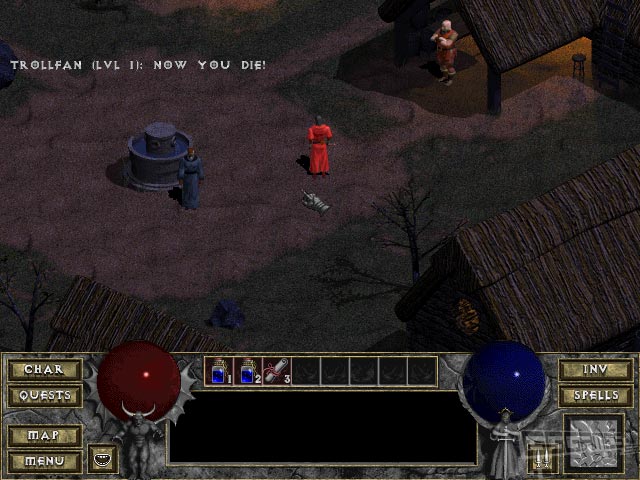
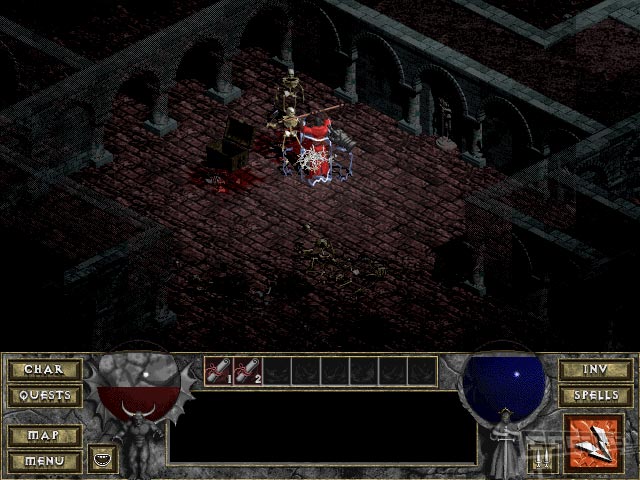
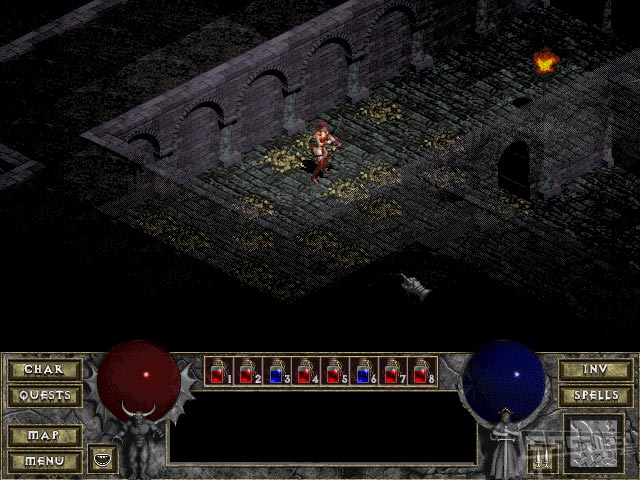
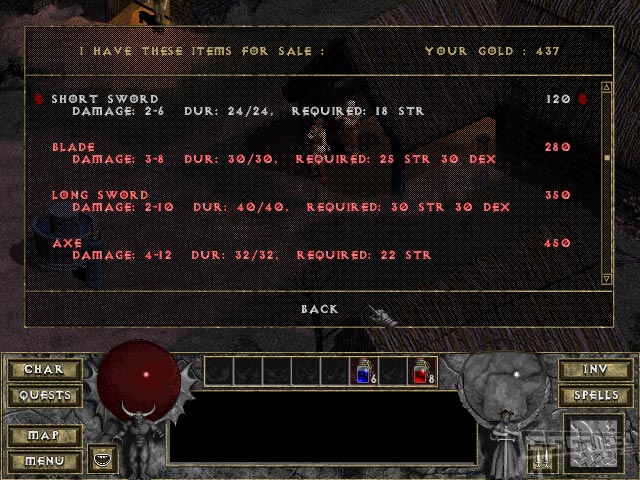
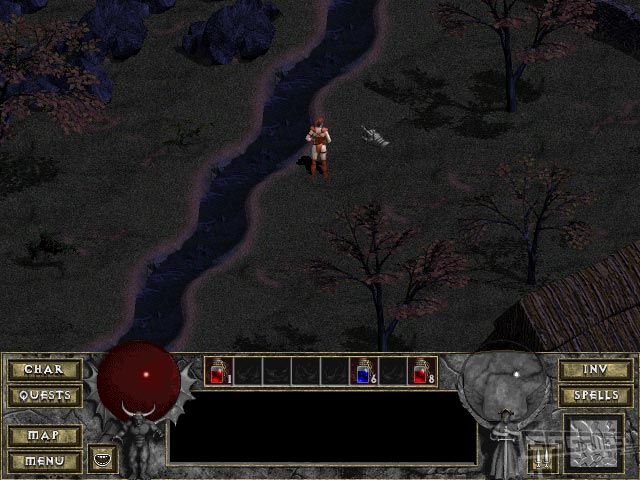
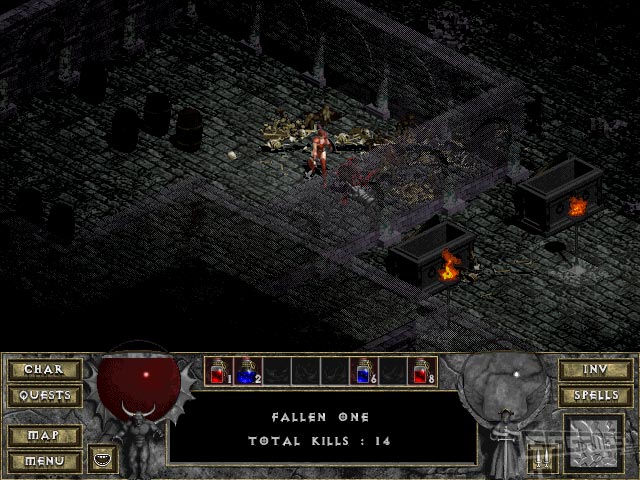
Developed By: Blizzard North
Published By: Blizzard Entertainment
Version Reviewed: Windows PC
Genre: Roleplaying
Players: 1-4
Also Available On: mac OS, Playstation
Released: 1997-11-02
Related Posts
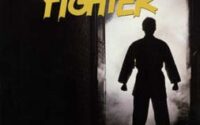
Street Fighter Review

Fat Worm Blows A Sparky Review
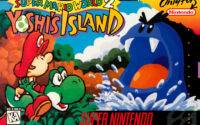
Super Mario World 2 – Yoshi’s Island
About The Author
Mattias
Played my first video game in the 80's on the Commodore 64, and have been hooked since then. Loved the 16-bit era, the glossy magazines, and the colorful arcade games from that time.
